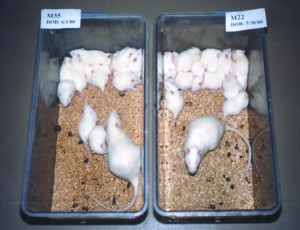The past two days have seen scientists, animal welfare officers, funding agencies and journal editors gather together in London for the 3rd Basel Declaration Society Conference. The focus? To discuss ways in which these various groups can collaborate to promote openness and transparency in animal research.

Following the Declaration of Helsinki, and its impact on human research, the Basel Declaration was adopted in 2010. The aim was to bring the scientific community together to further advance working and ethical practices whenever animals are used in research, and to call for more trust, transparency and communication on this sensitive topic.
Inspiring talks over the two days ranged from the need for honest communication and education about animal research to the need for unified guidelines to facilitate robust experimental design, analysis and reporting of animal studies. There were repeated calls for collaboration to make the results of animal research accessible in open access repositories and incentives to encourage this. It was agreed that so-called ‘negative results’ should also be shared by researchers and published by journals. A result is a result after all, and may have greater significance in years to come. We learnt about the legislation that protects animals used in scientific research in the European Union, but attention was also drawn to the fact that ethics and standards in research using animals are not the same worldwide. While accepting that people in different countries have different views on research involving animals, the International Council for Laboratory Animal Science (ICLAS) has provided an eight-point checklist to provide ethical guidance to researchers. Parallel workshops were a great way for people from a range of backgrounds to work together on various ‘position papers’, which included topics such as implementing the 3Rs – Replacement, Refinement and Reduction – of animals in research where possible while acknowledging the necessity of using non-human primates, cats and dogs in research where it is appropriate to do so.
At BioMed Central we will continue to do our bit to move with the needs of the community by encouraging robust reporting of animal studies (we endorse the ARRIVE guidelines), publishing journals that welcome negative results (BMC Research Notes, Journal of Negative Results in Biomedicine) and not restricting the length of published articles, so vital materials and methods are not omitted. And of course it goes without saying that publishing in an Open Access journal with a focus on the sharing and reuse of data is perhaps the best way to ensure transparency in research using animals.
Comments